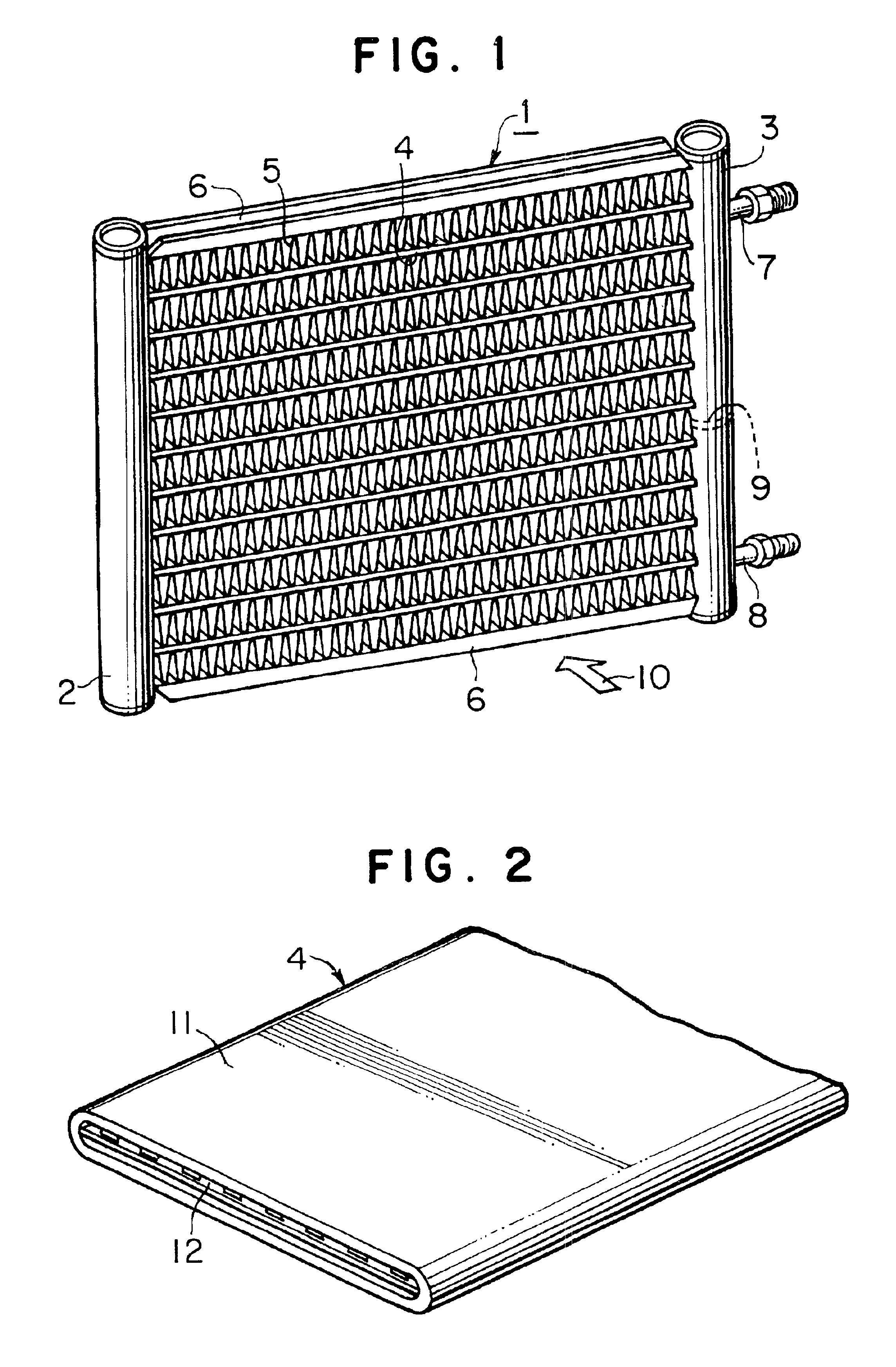Heat exchangers and fin for heat exchangers and methods for manufacturing the same
- Summary
- Abstract
- Description
- Claims
- Application Information
AI Technical Summary
Benefits of technology
Problems solved by technology
Method used
Image
Examples
Embodiment Construction
[0035]Referring to FIGS. 1 to 5, a heat exchanger, for example, a condenser, such as a multi-flow type heat exchanger, according to an embodiment of the present invention is disclosed. In FIG. 1, heat exchanger 1 includes a pair of headers 2 and 3 disposed in parallel to each other. A plurality of heat transfer tubes 4 (for example, flat-type refrigerant tubes) are disposed in parallel to each other with a predetermined interval. Tubes 4 fluidly interconnect the pair of headers 2 and 3. Corrugated fins 5 are interposed between the respective adjacent heat transfer tubes 4 and outside of the outermost heat transfer tubes 4 as outermost fins. Side plates 6 are provided on outermost fins 5, respectively.
[0036]Inlet pipe 7 for introducing refrigerant into heat exchanger 1 through header 3 is provided on the upper portion of header 3. Outlet pipe 8 for removing refrigerant from heat exchanger 1 through header 3 is provided on the lower portion of header 3. The inside of header 3 is divid...
PUM
| Property | Measurement | Unit |
|---|---|---|
| Length | aaaaa | aaaaa |
Abstract
Description
Claims
Application Information
 Login to View More
Login to View More - R&D
- Intellectual Property
- Life Sciences
- Materials
- Tech Scout
- Unparalleled Data Quality
- Higher Quality Content
- 60% Fewer Hallucinations
Browse by: Latest US Patents, China's latest patents, Technical Efficacy Thesaurus, Application Domain, Technology Topic, Popular Technical Reports.
© 2025 PatSnap. All rights reserved.Legal|Privacy policy|Modern Slavery Act Transparency Statement|Sitemap|About US| Contact US: help@patsnap.com



